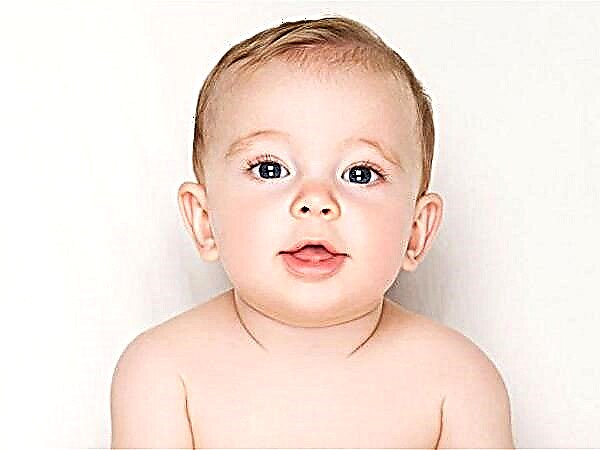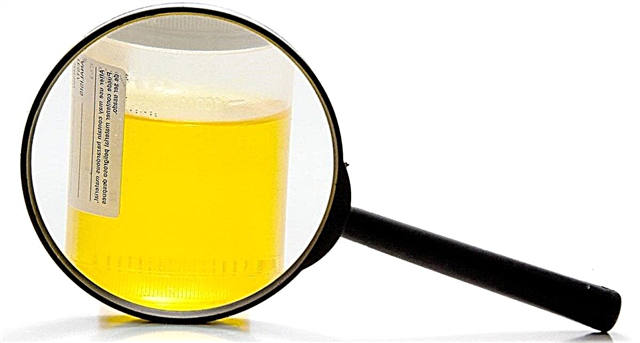It is known that the most common symptom of acute respiratory illness is coughing. It can have a different nature and different reasons. Accordingly, the strategy and tactics of treatment will change. Sometimes the problem goes away on its own as the child recovers, but more often a doctor's consultation is required.

Small children often get sick with acute respiratory infections
How to recognize the type of cough
It is very easy to recognize the type of cough. Dry is characterized by:
- Voiced "barking" sound;
- Wheezing or whistling;
- Lack of gurgling sounds;
- No secreted mucus or phlegm.
A wet cough, on the other hand, is characterized by gurgling due to the presence of mucus in the bronchi and lungs.
Symptoms and differences of cough reflexes
With a dry cough, the reflex occurs due to a sore throat and sore throat. When wet, due to the fact that a lot of thick mucus has accumulated in the bronchi, and the child is trying to push it back. Both types can be aggravated by lying down (for example, during sleep), as well as in the morning, when a lot of phlegm accumulates during the night.

There are different types of cough
Residual cough symptoms
It happens that a child's cough was wet and dry. In this case, we can talk about residual effects that can be observed for a long time after recovery (when the child is no longer sick, he rarely coughs, and this does not bother him much, there are no more painful attacks). In order for the residual effects to go away faster, doctors often prescribe physiotherapy and herbal medicine. It is also very useful to walk in the fresh air if there is no high humidity outside.
Cough transitions to different states
There are several factors that cause the transition of cough to different states:
- Change in the amount of sputum;
- Gradual recovery;
- On the contrary, the addition of an infectious complication;
- The occurrence of an allergic reaction to drugs used in the treatment of acute respiratory infections.
In each case, only a doctor can make a diagnosis.
Dry to wet cough
This transition occurs when the viscous phlegm becomes liquid. Then the child begins to cough up and feels better. Expectorants are prescribed to dilute sputum.

Sputum thinning is a prerequisite for recovery
Wet to dry
A dry cough in a child after a wet one usually occurs if the baby no longer has sputum and mucus in the lungs. As a rule, this symptom is residual, does not bother much and quickly disappears, as other symptoms of acute respiratory infections disappear. Physician-directed physical therapy sessions can help speed up your overall recovery.
Transient Causes
When a child's wet cough turns into a dry cough, this is due to the end of the period of intense mucus production. The opposite process, on the contrary, indicates an increase in the amount of sputum and its dilution, while the temperature may rise. When one type of cough in a child turns into another, parents need to:
- Consult a pediatrician;
- Cancel previously used medications and replace them with new ones as prescribed by a doctor;
- Assess the child's well-being (whether it has improved or worsened);
- If necessary, do an x-ray, fluorography and other additional studies.
Also, the pediatrician may prescribe a general analysis of urine and blood. Based on its results, it is possible to establish the initial nature of the disease: viral or bacterial.
The danger of different types of cough for a child
A wet cough is dangerous because a large amount of sputum can lead to its stagnation, because of this, infection is possible. The danger of dry is as follows:
- Throat irritation increases;
- Hoarseness of the voice may appear;
- The baby cannot eat and sleep normally;
- A nocturnal cough may be a symptom of laryngeal stenosis, or false croup.
In the latter case, the child suddenly wakes up at night with a severe cough and cannot breathe normally. It is necessary to urgently call an ambulance to relieve the attack, otherwise the baby will rapidly become worse. Further treatment is determined by the doctor. If there is an ultrasonic inhaler (nebulizer) at home, hospitalization is not required, you can treat your baby at home. Inhalation will help expand the bronchi and restore normal breathing.

A dry barking cough that occurs suddenly at night is especially dangerous.
Attention! A prolonged, dry, unproductive cough is dangerous because it prevents children from getting enough sleep. In this case, as prescribed by a doctor at night, you can give drugs that suppress the cough center of the brain.
When and what should be treated
If the child first has a wet cough and then a dry one, it is necessary to change the tactics of treatment and stop taking drugs that thin the phlegm. These drugs are available in various dosage forms:
- Syrups;
- Suspensions;
- Pills;
- Drops.
If the cough is caused by pneumonia or bronchitis, your doctor may prescribe antibiotic injections.
Which doctor to contact
If a wet cough becomes dry in a child, but does not completely go away and lasts for a long time, this may be a sign of an allergic reaction. In this case, you should consult with an allergist or pulmonologist to rule out the likelihood of developing bronchial asthma. In case of acute respiratory infections with a runny nose and fever, it is necessary to contact the local pediatrician at the place of residence, you can come to the clinic yourself or call a doctor at home.
A child who is coughing should drink as much liquid as possible. At home, you should do wet cleaning every day: mop the floor and dust. It is also recommended, if possible, to remove all allergens (fur and plush toys, pets, carpets and rugs) from the apartment. Any expectorant drugs should be given in the morning, but not at night. These medications increase the volume of phlegm, so if the child takes them in the evening, they will cough more often at night. The dosage of any drugs must be strictly age appropriate.
Komarovsky about cough
The well-known pediatrician Komarovsky claims that in the treatment of children's acute respiratory infections, the most important thing is not to take medications, but to create favorable living conditions for the child. To do this, it is necessary to ventilate the patient's room as often as possible. If the crumbs have no temperature, you can safely go for a walk. Drinking plenty of fluids helps to thin the sputum and its better discharge, which greatly facilitates the patient's well-being. It is not worth bringing down the temperature if it is below 38 degrees. Its increase is a protective reaction of the body to a meeting with a dangerous virus. If the baby is coughing due to the fact that mucus from the nose flows into the lungs, vasoconstrictor drops should be instilled in the child at night.
Attention! Dr. Komarovsky claims that no medicine will help to cope with the problem if its cause is not identified. Therefore, first of all, you need to understand why the patient is coughing. After eliminating the cause, the symptom itself will pass.
Disease prevention
For the prevention of acute respiratory infections, it is necessary to work hardening and make sure that the baby is eating properly. In winter and autumn, when the disease can begin at any moment, it is recommended to take multivitamin complexes and drugs that strengthen the immune system. Natural herbal remedies, for example, rosehip broth or cranberry juice, give a good effect. It is strictly forbidden to take any antibiotics for prophylactic purposes; such medications can be used only as directed by a doctor in case of pneumonia or bronchitis.
A healthy lifestyle plays an important role in the prevention of acute respiratory diseases. The child should spend as much time as possible in the fresh air and exercise daily. In early spring or autumn, when the peak of acute respiratory infections and influenza is observed, you should, if possible, refrain from visiting crowded places (theaters, train stations, shopping centers). All this will help preserve health.



